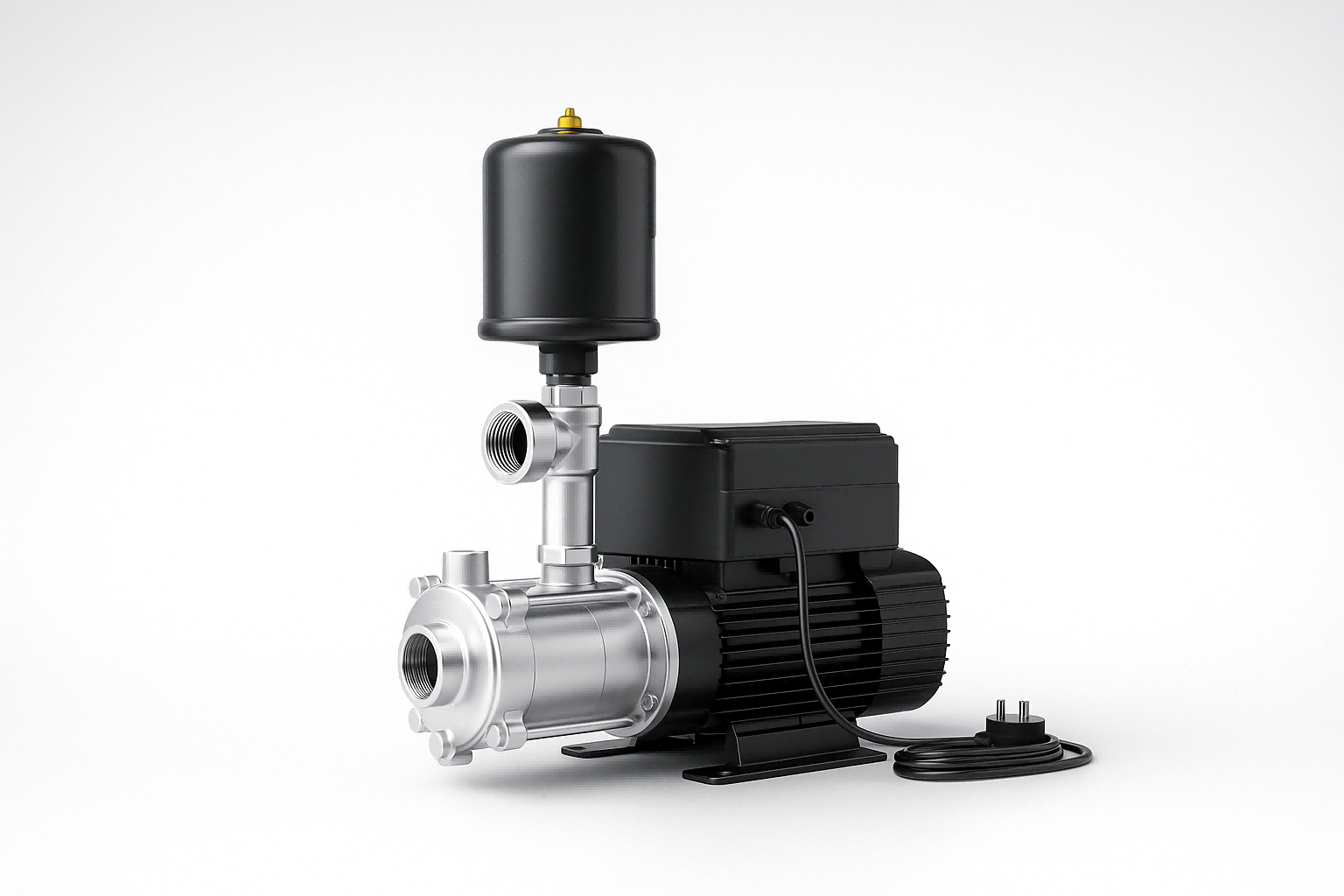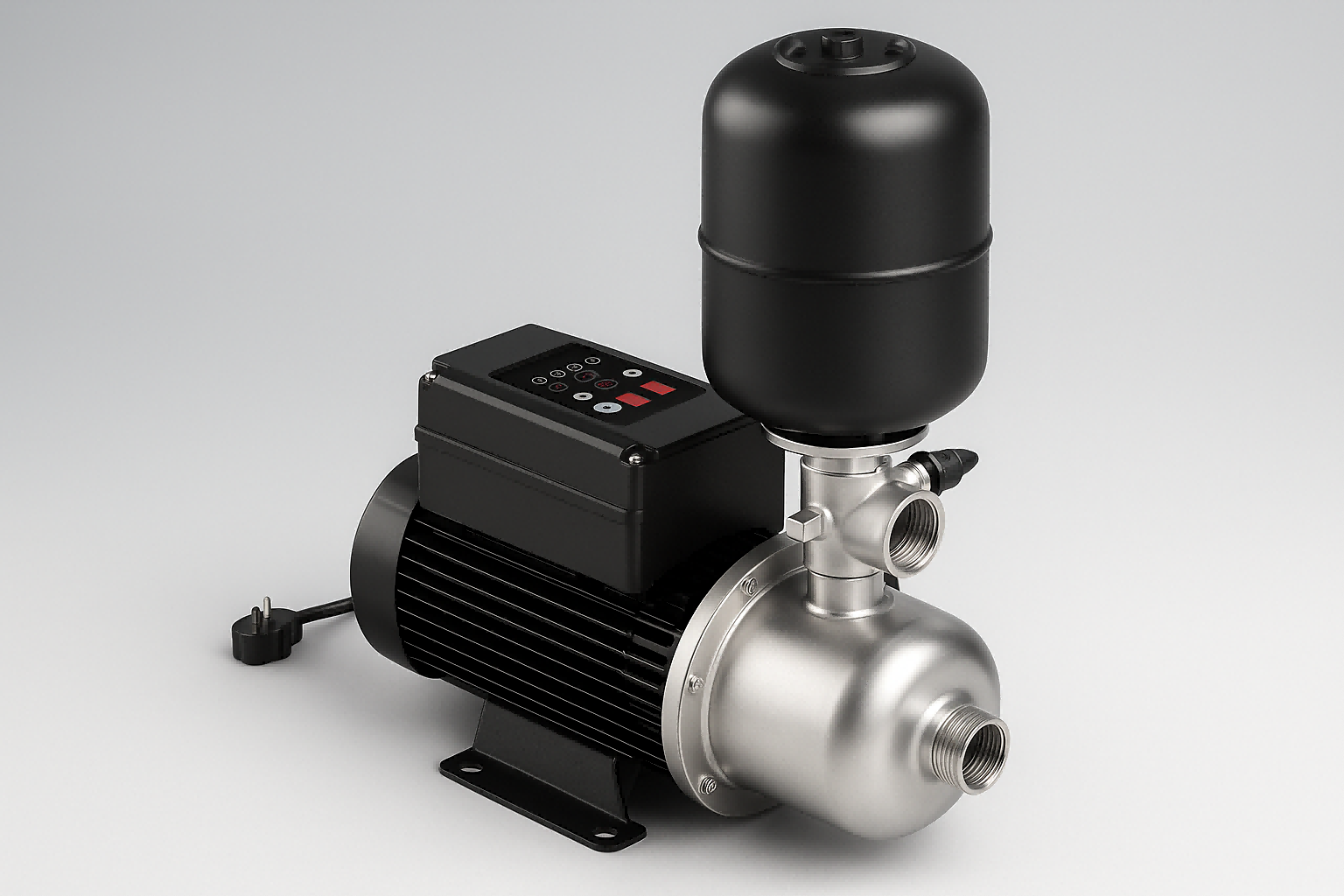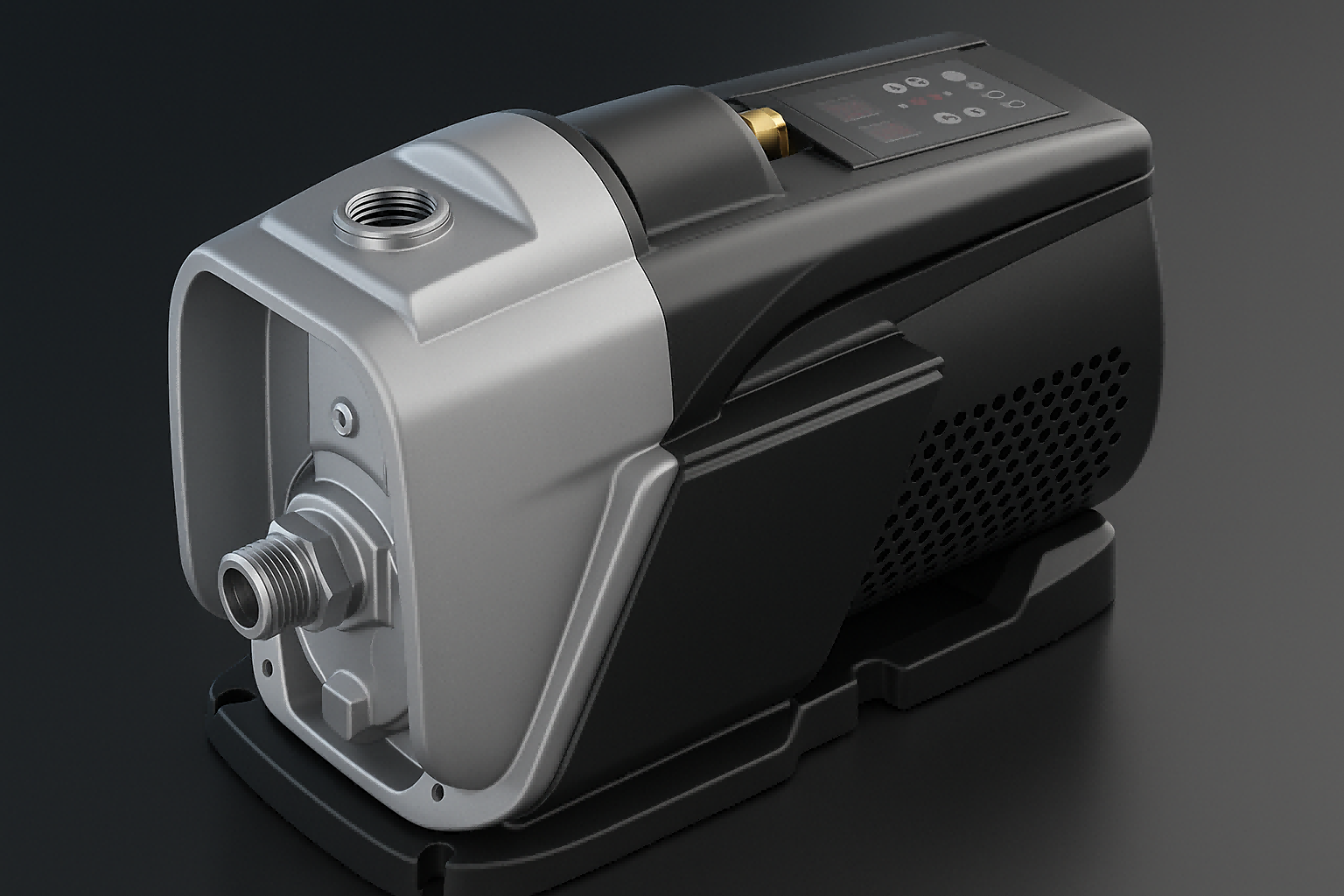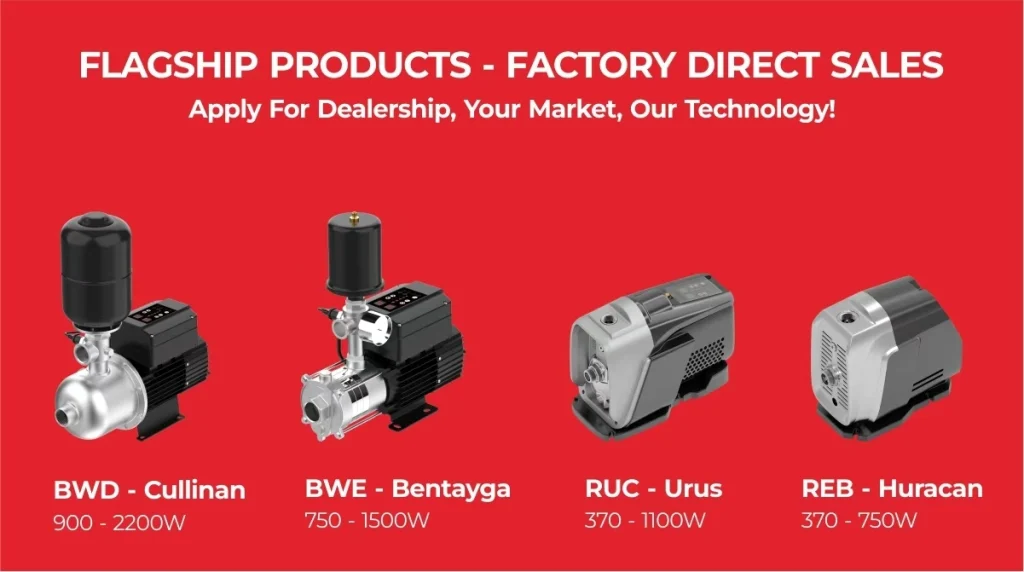Struggling with weak showers or inconsistent water flow?
This frustrating problem often points to an improperly matched water pump.
The three main types of water pumps are dynamic pumps, positive displacement pumps, and submersible pumps.
Dynamic pumps, like centrifugal pumps, use spinning impellers to move large volumes of water efficiently.
Positive displacement pumps move a fixed amount of fluid with each cycle, ideal for precise applications.

Choosing the right pump can feel overwhelming with so many options available.
Each type is engineered for specific tasks, from supplying a home with water to handling industrial chemicals.
Understanding the fundamental differences in how they work is the first step toward finding the perfect solution for your needs.
Let's explore these pump categories to see how their unique designs make them suitable for different jobs.
What Are Dynamic Pumps?
Tired of pumps that can't handle high-volume water needs?
A dynamic pump might be the solution you're looking for.
Dynamic pumps use spinning blades, called impellers, to add energy and velocity to a fluid.
This design is perfect for moving large amounts of water at lower pressures, making them extremely common and efficient.
Dynamic pumps work on a simple yet powerful principle.
They convert mechanical energy from a motor into the kinetic energy of the water.
This makes them ideal for a wide range of applications, from domestic water supply to large-scale industrial processes.
Their simple construction often means lower maintenance and a longer service life.
Let's delve deeper into how these pumps operate and what makes them so versatile.
The Role of Centrifugal Force
At the heart of most dynamic pumps is the principle of centrifugal force.
Water enters the pump near the center of a rapidly rotating impeller.
The impeller's vanes catch the water and accelerate it, flinging it outward toward the pump casing.
This action increases the water's speed and pressure.
The shape of the pump casing, called a volute, is designed to slow the water down.
As the water slows, its kinetic energy is converted into high-pressure potential energy.
This pressure is what forces the water out of the pump and through the plumbing system.
Modern Advancements in Dynamic Pumps
Modern dynamic pumps have seen significant technological upgrades.
The most impactful of these is the integration of Variable Frequency Drives (VFDs) and Permanent Magnet Synchronous Motors (PMSM).
This combination allows the pump to adjust its speed in real-time based on water demand.
Key Benefits of VFD Technology
- Constant Pressure: The system automatically maintains a steady water pressure, eliminating fluctuations.
- Energy Savings: By running only at the speed needed, these pumps can reduce electricity consumption significantly compared to fixed-speed pumps.
- Reduced Wear and Tear: A soft-start and soft-stop function gradually ramps the motor speed up and down. This minimizes mechanical stress and reduces the risk of water hammer, extending the pump's lifespan.
| Feature | Fixed-Speed Pump | VFD-Equipped Pump |
|---|---|---|
| Operation | Runs at 100% speed or is off | Adjusts speed to meet demand |
| Pressure | Fluctuates as demand changes | Constant and stable |
| Energy Use | High, constant consumption when on | Optimized, lower consumption |
| Mechanical Stress | High, due to abrupt starts/stops | Low, due to soft start/stop |
| Noise Level | Generally louder | Significantly quieter |
These advancements have transformed dynamic pumps into intelligent, efficient machines.
They deliver superior performance while protecting themselves and the plumbing system from damage.
This makes them a top choice for modern residential and commercial buildings.
What Are Positive Displacement Pumps?
Do you need to move thick fluids or require exact flow rates?
A standard pump might not handle the job effectively.
Positive displacement pumps work by trapping a fixed amount of fluid and then forcing it into the discharge pipe.
This mechanism provides a constant flow rate regardless of pressure, making them perfect for viscous fluids and metering.
Unlike dynamic pumps that generate pressure through velocity, positive displacement pumps move fluid with a direct pushing action.
This makes them incredibly versatile and reliable for challenging tasks where precision is key.
Their ability to self-prime and handle high-viscosity liquids sets them apart.
Let's examine the different types and how they achieve such consistent and powerful performance.
How They Work: Trap and Move
The core principle of a positive displacement pump is simple: it traps and moves fluid.
This is achieved through either a reciprocating (back-and-forth) or rotary (spinning) motion.
With each cycle, a specific volume of liquid is captured in a chamber and then displaced.
This process ensures a steady, non-pulsating flow that is proportional to the pump's speed.
It also allows these pumps to generate very high pressures.
Major Types and Their Uses
Positive displacement pumps come in several designs, each suited for different applications.
Understanding these types helps in selecting the right pump for a specific task.
Reciprocating Pumps
These pumps use a back-and-forth motion to move fluid.
- Piston Pumps: A piston moves within a cylinder to draw in and push out fluid. They are excellent for high-pressure applications like pressure washers.
- Diaphragm Pumps: A flexible diaphragm creates the pumping action. This design is ideal for handling corrosive or abrasive fluids because the fluid does not contact the mechanical parts.
Rotary Pumps
These pumps use rotating components to trap and move fluid.
- Gear Pumps: Meshing gears rotate to move fluid trapped between the gear teeth and the pump casing. They are great for transferring viscous liquids like oil and syrups.
- Lobe Pumps: Similar to gear pumps but with lobes that do not touch. This gentle action is perfect for shear-sensitive products like food items and pharmaceuticals.
- Screw Pumps: One or more rotating screws move fluid axially along the screw threads. They excel at moving very thick liquids or materials with solids.
| Pump Type | Mechanism | Best For | Common Uses |
|---|---|---|---|
| Piston | Reciprocating Piston | High Pressure | Chemical Injection, Cleaning |
| Diaphragm | Reciprocating Diaphragm | Corrosive/Abrasive Fluids | Chemical Dosing, Waste Treatment |
| Gear | Rotary Intermeshing Gears | High-Viscosity Fluids | Oil Transfer, Hydraulic Systems |
| Lobe | Rotary Non-Contacting Lobes | Shear-Sensitive Products | Food Processing, Pharmaceuticals |
This ability to handle a wide range of fluid types with precision makes positive displacement pumps indispensable in many industries.
What Are Submersible Pumps?
Do you need to move water from a deep well or a flooded basement?
A surface pump might struggle with the suction lift required.
A submersible pump is a device designed to be fully immersed in the fluid it is pumping.
Its motor is hermetically sealed and close-coupled to the pump body, allowing it to push water to the surface with great efficiency.
Because submersible pumps push water instead of pulling it, they avoid the priming issues that can affect surface pumps.
This makes them incredibly reliable for deep wells, sumps, and other applications where the pump must be located within the water source.
Their design ensures they stay cool and operate quietly.
Let's dive into the features that make these pumps so effective and durable in wet environments.
Designed for a Life Underwater
The defining feature of a submersible pump is its sealed construction.
The motor and all electrical components are enclosed in a watertight housing.
This prevents any liquid from getting inside and causing a short circuit.
This robust sealing is crucial for ensuring a long and reliable service life.
Being submerged also provides a key advantage: cooling.
The surrounding water constantly dissipates heat generated by the motor, preventing it from overheating.
This allows the pump to run continuously for long periods without risk of damage.
The Importance of Advanced Sealing and Protection
For a pump that lives underwater, reliability is everything.
The most critical factor is protecting the internal electronics from moisture.
Modern high-quality pumps use advanced techniques to ensure total protection.
IP67 Rated Electronic Protection
The gold standard for waterproofing is known as potting.
This process involves completely encasing the main controller board (PCB) in a durable, waterproof resin.
This creates an impenetrable barrier against moisture, dust, and condensation.
- Total Waterproofing: An IP67 rating means the core electronics are protected even when submerged in water.
- Prevents Failures: This technique can prevent over 95% of failures caused by moisture, which is the most common cause of electronic failure in pumps.
- Extends Lifespan: By isolating sensitive components from the harsh environment, potting can extend the controller's life by several years.
This level of protection is a key indicator of a well-engineered pump built to last.
Beyond Waterproofing: Smart Self-Protection
Modern submersible pumps are not just sealed; they are intelligent.
They are equipped with a suite of sensors and software that monitor operating conditions in real-time.
This allows them to protect themselves from various potential faults.
| Protection Feature | What It Does | Why It's Important |
|---|---|---|
| Dry Run Protection | Senses a lack of water and shuts the pump off. | Prevents the motor from burning out when the water source runs dry. |
| Overheating Protection | Monitors motor and water temperature and stops if it gets too hot. | Protects the motor windings and electronics from heat damage. |
| Voltage Protection | Guards against power surges or drops in the electrical supply. | Prevents damage to the motor from unstable power grids. |
| Antifreeze Protection | Automatically runs the pump for short periods in freezing weather. | Prevents ice formation that could crack the pump housing. |
These smart features make submersible pumps incredibly robust and reliable.
They can operate unattended for long periods, providing peace of mind in critical applications like well water supply and flood prevention.
How Do You Choose the Right Water Pump?
Feeling lost in a sea of technical specifications?
Choosing the wrong pump can lead to poor performance and wasted energy.
To choose the right pump, you must first define your needs by considering four key factors: flow rate, pressure, the type of fluid, and the available power source.
Matching these requirements to a pump's capabilities ensures optimal efficiency and reliability.
Selecting the best water pump is a process of matching the tool to the job.
It's not just about a single feature, but how the entire system will perform in your specific environment.
Taking the time to understand your needs will pay off with a system that works flawlessly for years.
Let's break down the essential factors to consider to make an informed decision.
Four Key Factors to Consider
Before looking at pump models, you need to answer a few questions about your application.
This will help you narrow down the options significantly.
1. What is the Required Flow Rate?
Flow rate, measured in gallons per minute (GPM) or liters per minute (LPM), is the volume of water the pump needs to move.
A home may need 10-20 GPM, while an irrigation system could require over 100 GPM.
Calculate your peak demand to ensure the pump can keep up.
2. How Much Pressure (Head) Is Needed?
Pressure, often referred to as 'head', is the vertical and horizontal distance the pump must move the water.
It also includes any pressure loss due to friction in the pipes.
You need to calculate the total dynamic head to ensure the water reaches its destination with enough force.
Dynamic pumps are great for high flow and low head, while positive displacement pumps excel at high head and low flow.
3. What Type of Fluid Are You Pumping?
Is it clean water, wastewater with solids, a thick slurry, or a corrosive chemical?
The fluid's characteristics will determine the type of pump and the materials it should be made from.
- Clean Water: Standard centrifugal or submersible pumps are ideal.
- Water with Solids: Look for pumps with grinder or vortex impellers designed to handle solids without clogging.
- Viscous or Abrasive Fluids: A positive displacement pump is often the best choice, as its mechanism can handle thick or harsh liquids.
4. What is Your Power Source?
Pumps can be powered by various sources, and your location may limit your options.
| Power Source | Advantages | Disadvantages |
|---|---|---|
| Electricity | Quiet, low maintenance, efficient | Requires a stable electrical grid |
| Gasoline/Diesel | Portable, powerful, no grid needed | Noisy, requires refueling, emissions |
| Solar | Low running costs, eco-friendly | High initial cost, weather-dependent |
Choosing a pump with wide voltage adaptability (e.g., 165–260V) can be a major advantage in areas with an unstable power supply.
It ensures consistent performance even when the grid voltage fluctuates.
Conclusion
Understanding the core types of pumps—dynamic, positive displacement, and submersible—is key to solving any water movement challenge effectively and efficiently.
FAQs
What are the 2 main types of pumps?
The two primary classifications are dynamic pumps, which use velocity to create pressure, and positive displacement pumps, which move a fixed volume of fluid.
Which pump is used for high pressure?
Positive displacement pumps, such as piston pumps, are generally best for generating very high pressures, as they trap and force the fluid out.
What is the difference between a centrifugal pump and a submersible pump?
A centrifugal pump is a type of mechanism, while a submersible pump is defined by its placement underwater. Most submersible pumps are centrifugal in design.
How do I choose a water pump for my house?
For home use, consider your water source (well or municipal) and pressure needs. A booster pump can increase low municipal pressure, while a submersible pump is needed for deep wells.
What is the most common type of water pump?
Centrifugal pumps are the most widely used type of pump globally due to their simple design, efficiency, and suitability for a vast range of water-moving applications.
Can a pump increase water pressure?
Yes, that is the primary function of a booster pump. It takes existing water flow and increases its pressure for better performance in showers and appliances.
What causes a water pump to fail?
Common causes of failure include running without water (dry running), overheating, electrical issues from an unstable power supply, and blockages from debris.







